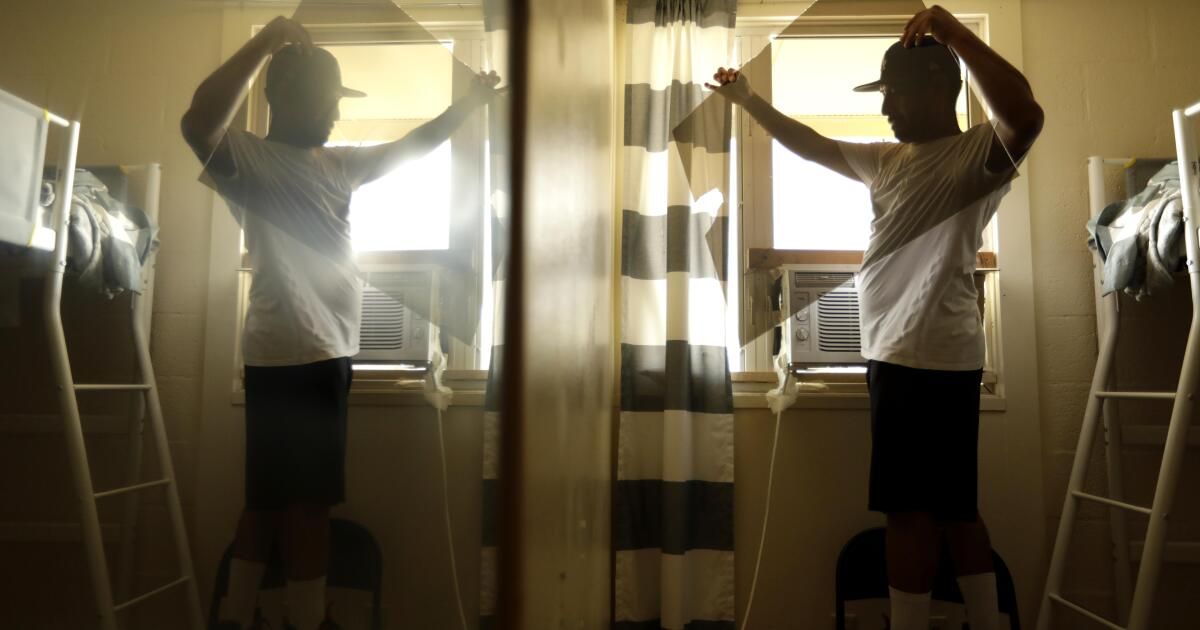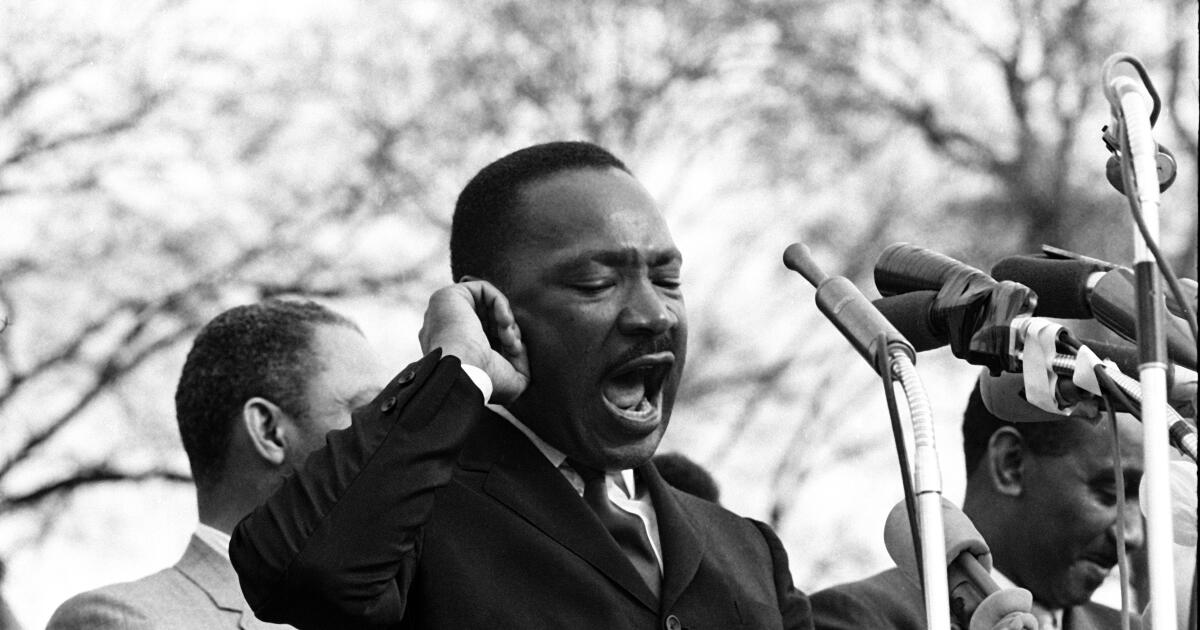Suding inside his apartment as the temperature rises more and more common in angels and, as the extreme heat intensifies, more dangerous. Last month, the Los Angeles County Supervisors Board approved An ordinance This will require owners to guarantee the ability to maintain a temperature of 82 degrees or below in all habitable rooms by 2027 or 2032, depending on how many units the owner has.
This is a step in the right direction, but what else can be done? What can tenants do to face up to 2032? Staying fresh often requires more than simply increasing air conditioning. Promising strategies include passive steps such as isolation and cooling apartments in areas.
During the warm climate, Los Angeles See increases in heat diseases, emergency services and hospitalization rates. At the same time, the power grid during heat waves has shown its vulnerability: in 2024, more than 10,000 South Californians lost energy during the heat waves of SeptemberLeaving residents, and places like Hollywood Bowl, without electricity.
Heat waves of several days, especially those with sustained night heat, place Significant stress in grid assets. According to southern California, Edison Vulnerability evaluation 2022Many transformers and other assets of the grid could fail in heat wave conditions that are projected that will occur by 2030. Energy cuts during heat waves not only increase health risks, but can also interrupt critical services such as hospitals and emergency response operations. But strengthening the network to address these vulnerabilities is challenging and expensive, and not something that tenants can do on their own.
In report financed by him Rand Center for Climate and Energy FuturesWe use the Energyplus model of the US Department of Energy. To execute more than 1,000 construction energy simulations to explore the effects of different cooling strategies and requirements on interior temperatures and the use of electricity under different climatic conditions. This identified some simple steps that tenants and owners can take.
Extreme heat events are fundamentally different from regular hot days, which leads to much higher energy use. In the subrainated houses, even the air conditioning to run at full capacity often cannot maintain interior temperatures below 82 degrees during extreme heat.
Passive cooling strategies, such as improved insulation and best windows, can help maintain safe interior temperatures and reduce annual energy demand. Owners seeking to comply with the terms of this new ordinance must investigate passive cooling strategies together with air conditioners.
One of the most effective solutions we find is to reduce the cooled space, maintain a room or cold area while allowing other parts of the house to heat up. This is a tactic that residents and owners can be deployed by very low cost. Relieve stress in the electricity grid and reduce energy invoices, even during extreme conditions. When network operators ask consumers to limit their use of electricity at times of high demand through Flexible alertsThey could ask residents to reduce the area that cools instead of only suggesting that the AC.
In the ordinance, the County supervisors recognized the usefulness of the cooling of the area. They included a language that provides the owners with 10 or less units until 2032 to comply with the new regulations, but requires that at least one habitable area in each apartment comply with the threshold of 82 degrees in the meantime.
The ordinance also gives tenants the right to take their own steps to stay fresh. As of September 4, tenants in any unit may install their own cooling means, such as blackout curtains or air conditioning units, without eviction risk.
The reward extends far beyond an individual's house. Although California plans Disarbonize the gridIn the hottest days, the State often depends on A more carbon intensive mixture than during typical operations. Any reduction in electricity for the use of passive cooling strategies or zone cooling will reduce greenhouse gas emissions and, therefore, will help curb future heat waves.
Sophia M. Charan is an associated engineer in Rand, where Hye Min Park is a doctoral student at the School of Public Policies and Policy Assistant Analyst.
Perspectives
Times Insights It offers an analysis generated by the voices content to offer all points of view. Insights does not appear in any news article.
point of view
Perspective
The following content generated by AI works perplexed. Los Angeles Times editorial staff does not create or edit the content.
Ideas expressed in the piece
-
The County cooling mandate represents a necessary step to address the growing danger of extreme heat in rental homes, since sweating inside the apartments during temperature rises becomes increasingly common and dangerous for residents.
-
Passive cooling strategies offer promising alternatives to simply increase air conditioning, with an investigation that demonstrates that improved insulation, better windows and other non -mechanical methods can effectively maintain safe interior temperatures while reducing annual energy demand.
-
The cooling of the zone arises as one of the most effective and profitable solutions, which allows residents and owners to maintain a cold room while allowing other areas to heat up, thus relieving stress in the electricity grid and reducing energy invoices even during extreme conditions.
-
The arrangement of the ordinance that allows owners with 10 or less units until 2032 Comply with the regulations, while requireing at least one habitable zone to comply with the threshold of 82 degrees demonstrates a practical recognition of the effectiveness of the cooling of the area and provides reasonable flexibility for smaller property owners.
-
Empower tenants with the right to install their own cooling measures, such as blackout curtains or air conditioning units of the window without eviction risk, create immediate relief opportunities, while the broader implementation proceeds.
-
The environmental benefits extend beyond individual comfort, since reducing the consumption of electricity through passive cooling strategies and cooling of areas helps reduce greenhouse gas emissions and curb future heat waves, even when California works to decarbonize its grid.
Different views on the subject
-
The Great Los Angeles Apartment Association firmly opposes the mandate, arguing that it will increase the costs of the house and, ultimately, will lead to higher rentals, with the concern that any cooling device is ineffective if it is too expensive to operate because the tenants cannot pay the electricity bills[1].
-
Property administration professionals warn that compliance can be incredibly complicated and invasive, which requires substantial capital disbursements, with owners who meet compliance even if rooms and life areas are actively cool, but fail to maintain cooking temperatures at 82 degrees or less than 82 degrees[2].
-
Industry representatives question whether the electricity network can accommodate the additional load of generalized cooling requirements, noting that customers already face blackouts and drugs during the summer months, which generates concerns about the reliability of the system.[1].
-
Some county supervisors express their concern that compliance costs can expel small business owners, with skepticism about the county capacity to provide financial support and appropriate resources for the necessary construction modifications[2].
-
The owner's defenders argue that the mandate does not take into account the practical challenges of the modernization of the oldest buildings, particularly those without existing duct systems or an adequate electrical service, while the defenders of the tenants recognize the concerns about the prices of public services that affect low -income tenants[1][2].










